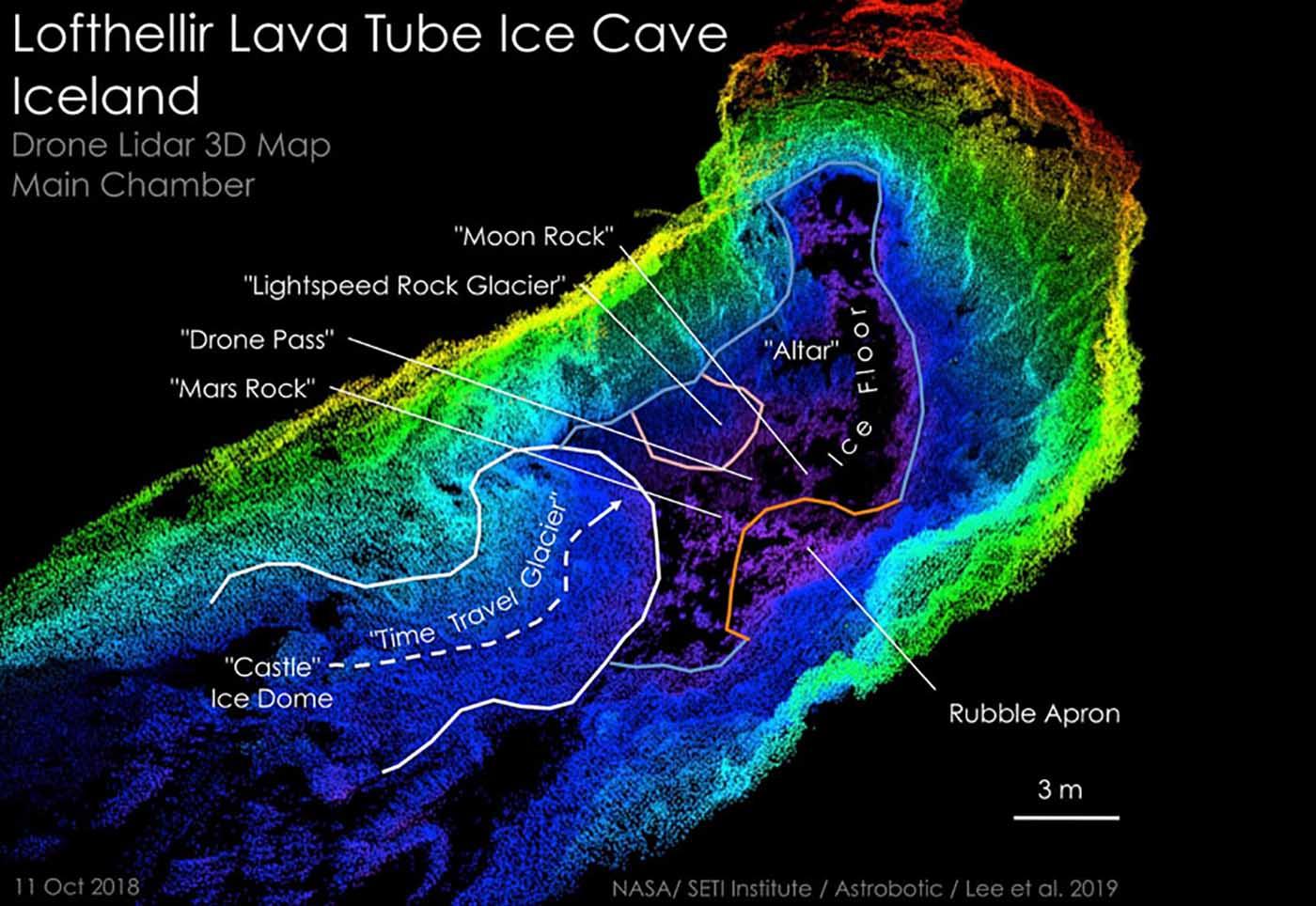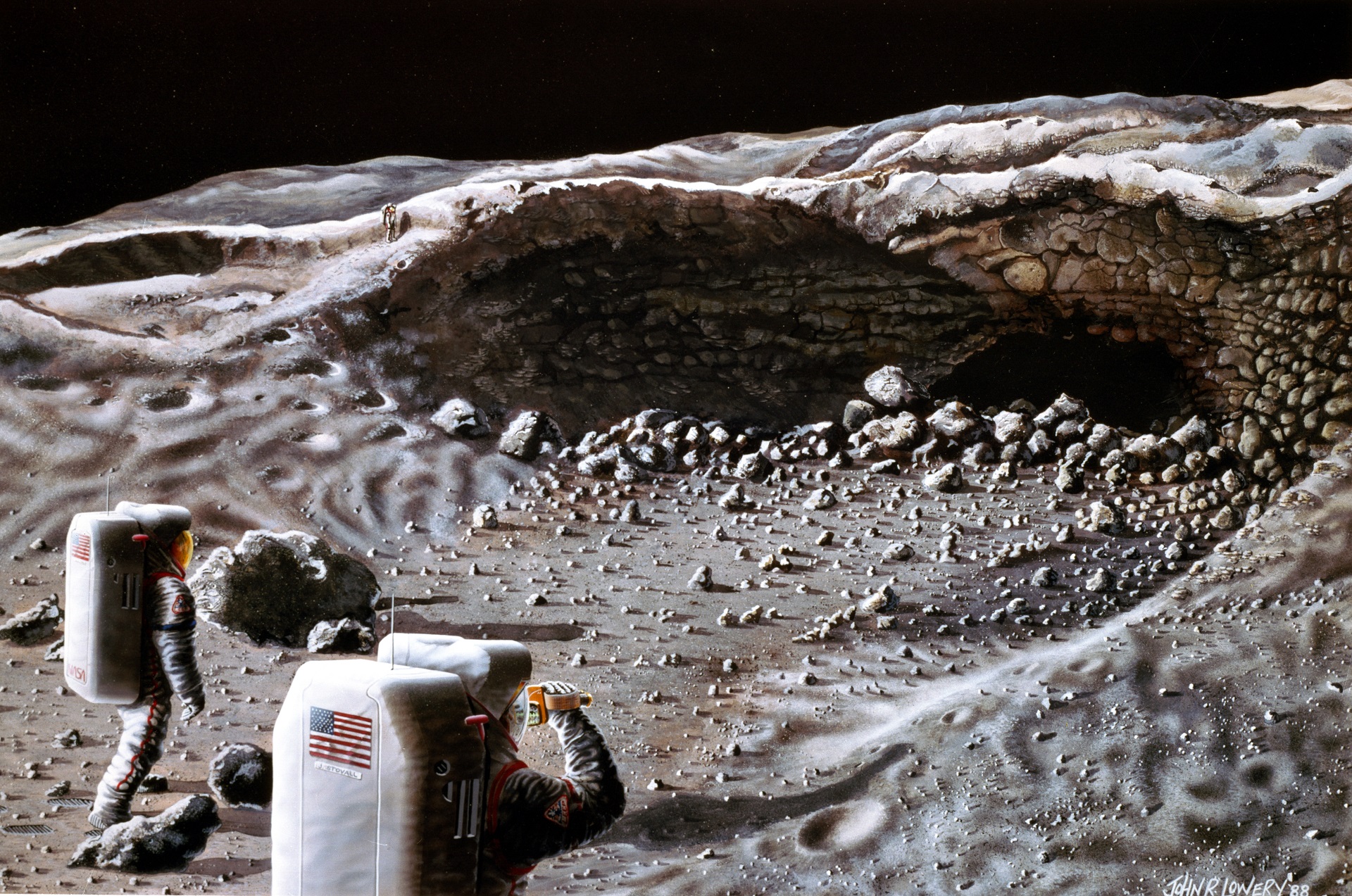Challenges and Opportunities in Lunar Cave Exploration

Lunar cave exploration presents a unique set of challenges and opportunities for scientists and explorers. The extreme conditions on the Moon, including the lack of atmosphere, extreme temperatures, and radiation exposure, make cave exploration a hazardous undertaking. Additionally, the lack of natural light and the complex terrain within caves make navigation and mapping difficult.
Despite these challenges, lunar caves offer a wealth of scientific and resource opportunities. Caves can provide shelter from the harsh lunar environment, and they may contain evidence of past water or life. Additionally, caves may contain valuable resources, such as water ice and minerals.
International collaboration will be essential for the successful exploration of lunar caves. No single country has the resources or expertise to undertake such a complex and ambitious endeavor. By working together, nations can pool their resources and expertise to overcome the challenges of lunar cave exploration and reap the benefits that these caves have to offer.
Technical Challenges of Lunar Cave Exploration
The technical challenges of lunar cave exploration are significant. The lack of atmosphere on the Moon means that explorers must wear spacesuits to protect themselves from the vacuum and radiation. The extreme temperatures on the Moon, which can range from -170 degrees Celsius to 120 degrees Celsius, require explorers to have specialized suits that can regulate their body temperature.
The lack of natural light in caves makes navigation and mapping difficult. Explorers must use artificial light to illuminate their surroundings, and they must be careful not to get lost. The complex terrain within caves can also make navigation difficult, and explorers must be prepared for unexpected obstacles.
Scientific and Resource Opportunities of Lunar Caves
Lunar caves offer a wealth of scientific and resource opportunities. Caves can provide shelter from the harsh lunar environment, and they may contain evidence of past water or life. Additionally, caves may contain valuable resources, such as water ice and minerals.
Caves can provide shelter from the harsh lunar environment. The temperature inside caves is relatively stable, and caves can provide protection from radiation and micrometeoroids. This makes caves a potential habitat for future lunar explorers.
Caves may contain evidence of past water or life. Water is essential for life, and if water was once present on the Moon, it is likely that it would have been found in caves. Caves can also provide a protected environment for microorganisms, and if life once existed on the Moon, it is possible that it could still be found in caves today.
Caves may contain valuable resources, such as water ice and minerals. Water ice is a valuable resource on the Moon, and it could be used to produce drinking water, oxygen, and fuel. Minerals found in caves could also be used to build structures and other equipment.
Role of International Collaboration in Lunar Cave Exploration
International collaboration will be essential for the successful exploration of lunar caves. No single country has the resources or expertise to undertake such a complex and ambitious endeavor. By working together, nations can pool their resources and expertise to overcome the challenges of lunar cave exploration and reap the benefits that these caves have to offer.
International collaboration can help to reduce the cost of lunar cave exploration. By sharing the costs of research and development, nations can make lunar cave exploration more affordable. International collaboration can also help to reduce the risks of lunar cave exploration. By sharing information and expertise, nations can help to ensure that lunar cave explorers are safe and that their missions are successful.
International collaboration can also help to promote peace and cooperation among nations. By working together to explore the Moon, nations can build trust and understanding. This can help to reduce tensions and promote peace around the world.
Future Missions and Technologies for Lunar Cave Exploration: Nasa Moon Caves

Nasa moon caves – Future lunar exploration missions will prioritize the exploration of lunar caves as they hold significant scientific and practical value. These caves offer unique environments that may have preserved ancient geological formations, shielded from harsh radiation and micrometeoroid bombardment. Additionally, they could potentially provide shelter and resources for future human habitation.
To effectively explore these caves, innovative technologies are being developed, including advanced imaging and mapping systems, autonomous navigation and exploration robots, and specialized lighting and communication systems. These technologies will enable scientists and engineers to remotely explore and map the caves, identify potential hazards, and assess their habitability.
Planned and Proposed Lunar Missions Focused on Cave Exploration
Several lunar missions are planned or proposed with a focus on cave exploration. The Artemis program, led by NASA, includes plans to send astronauts to the lunar South Pole region, where multiple caves have been identified. The European Space Agency (ESA) is also planning a mission called PAVES (Polar Autonomous Vehicle for Exploration and Science), which aims to deploy a rover to explore a lunar polar crater containing a cave.
Development of Innovative Technologies for Lunar Cave Exploration
The development of innovative technologies is crucial for successful lunar cave exploration. These technologies include:
- Advanced Imaging and Mapping Systems: These systems will provide detailed images and maps of the caves, allowing scientists to identify geological features, potential hazards, and areas of interest.
- Autonomous Navigation and Exploration Robots: These robots will be able to autonomously navigate and explore the caves, collecting data and transmitting it back to scientists on Earth.
- Specialized Lighting and Communication Systems: These systems will provide illumination and communication capabilities within the caves, enabling scientists to remotely explore and monitor the environment.
Potential for Human Habitation and Resource Utilization in Lunar Caves, Nasa moon caves
Lunar caves have the potential to provide shelter and resources for future human habitation on the Moon. The caves offer protection from radiation, micrometeoroid bombardment, and extreme temperatures. Additionally, they may contain resources such as water ice, which could be used for life support and rocket propellant.
Amidst the celestial tapestry, NASA’s lunar exploration has unveiled the enigmatic moon caves, their enigmatic depths promising tantalizing secrets. Yet, as if nature sought to mirror this cosmic curiosity, a meteorological anomaly unfolded in Philadelphia, where snowfall graced the tarmac in the heart of July.
This meteorological marvel served as a stark reminder of Earth’s own unpredictability, even as we venture beyond our terrestrial home to unravel the mysteries of the moon.
NASA’s discovery of moon caves has sparked renewed interest in lunar exploration, particularly among private companies like Elon Musk’s SpaceX. Musk has ambitious plans to establish a permanent human presence on the Moon, and the moon caves could provide shelter and resources for future lunar explorers.
The caves could also contain valuable scientific information about the Moon’s history and formation.